Blepharis
Lucinda A. McDade and Carrie Kiel- Blepharis acuminata Oberm.
- Blepharis asteracanthus C. B. Clarke
- Blepharis buchneri Lindau
- Blepharis calcitrapa Benoist
- Blepharis diversipina (Nees) C. B. Clarke
- Blepharis edulis (Forssk.) Pers.
- Blepharis integrifolia (L.f.) E. Mey. ex Schinz
- Blepharis katangensis De Wild.
- Blepharis maderaspatensis (L.) Roth.
- Blepharis natalensis Oberm.
- Blepharis sinuata (Nees) C. B. Clarke
- Blepharis subvolubilis C. B. Clarke
- Blepharis tenuiramea S. Moore
- Blepharis trispina Napper
Note: this taxon list is still under construction. It does not yet contain all known Blepharis subgroups.
The list above includes only taxa that were sampled by McDade et al. (2005). There are many other species of Blepharis as treated by Vollesen (2000); these likely belong to this clade but this needs to be confirmed with further study.Introduction
Blepharis is the largest genus of Acantheae in the Old World; it was recently monographed by Vollesen (2000) as containing 129 species. Phylogenetic analyses using molecular data indicate that the genus is monophyletic with the somewhat enigmatic exception of B. dhofarensis which is placed with species of Acanthus, with strong support. Our results also clearly point to two very well supported subclades within Blepharis; these correspond to Vollesen's (2000) subgenera Acanthodium and Blepharis.
Characteristics
Plants belonging to this genus have leaves in pseudowhorls and extremely odd dimorphic filaments: the anterior pair is laterally flattened and bears a remarkable appendage distally (i. e., near the anther). This appendage is usually tooth- or finger-like but is sometimes rounded. The posterior pair is 'normal': narrower and unappendaged. These plants also have seeds with hygroscopic (i. e., water absorbing) trichomes.
The two subclades of Blepharis are both very strongly supported by molecular data and one, subgenus Blepharis, is also extremely well marked by morphological synapomorphies: inflorescences are reduced, the corolla limb has three (rather than five) lobes, and the fertile portion of each anther locule is reduced to 1/2 - 2/3 of the total anther length. In contrast, subgenus Acanthodium is not marked by synapomorphies that we have been able to identify. It is interesting in this context that Vollesen suggested that Acanthodium is the least advanced of the two subgenera.
References
McDade, L. A., T. F. Daniel, C. A. Kiel, and K. Vollesen. 2005. Phylogenetic relatinships among Acantheae (Acanthaceae): Major lineages present contrasting patterns of molecular evolution and morphological differentiation. Systematic Botany 30: 834-862.
Vollesen, K. 2000. Blepharis (Acanthaceae): a taxonomic revision. Kew: Royal Botanic Gardens.
Title Illustrations

| Scientific Name | Blepharis sinuata (Nees) C.B Clarke, McDade & Dold |
|---|---|
| Location | South Africa |
| Specimen Condition | Live Specimen |
| Copyright |
© 2006

|
About This Page

Rancho Santa Ana Botanic Garden, Claremont, California, USA
Carrie Kiel

Rancho Santa Ana Botanic Garden
Correspondence regarding this page should be directed to Lucinda A. McDade at and Carrie Kiel at
Page copyright © 2006 and Carrie Kiel
All Rights Reserved.
- First online 12 September 2006
- Content changed 12 September 2006
Citing this page:
McDade, Lucinda A. and Carrie Kiel. 2006. Blepharis. Version 12 September 2006 (under construction). http://tolweb.org/Blepharis/52312/2006.09.12 in The Tree of Life Web Project, http://tolweb.org/




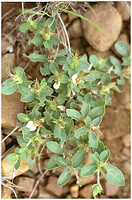
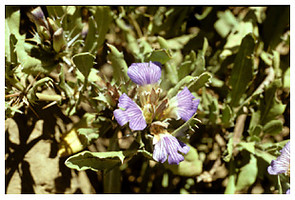
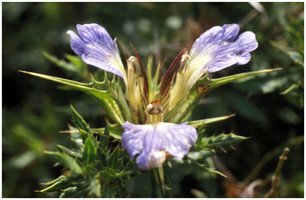
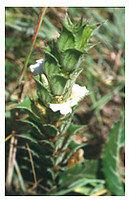

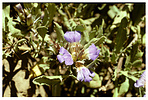
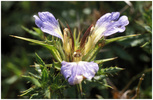



 Go to quick links
Go to quick search
Go to navigation for this section of the ToL site
Go to detailed links for the ToL site
Go to quick links
Go to quick search
Go to navigation for this section of the ToL site
Go to detailed links for the ToL site